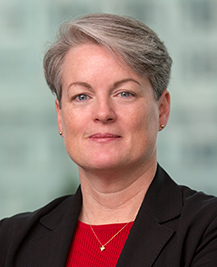In 2014, the U.S. Supreme Court made a ruling in Alice Corp. v. CLS Bank Int’l, 573 US 208 (2014), that seemed to slam shut the patent door for software. The opinion does not mention software, but the patents at issue were about software used in financial trading systems. The Court found that the four issued patents were not valid because their subject matter was not patent-eligible.
This decision caused all kinds of commotion. The United States Patent and Trademark Office (“USPTO”) rejected patent applications on software patents, and revoked allowances on allowed applications. In the courts, cases filed in the federal district courts before the ruling were being thrown out because the patents in the suits were being found invalid.
As a result, with little hope of getting patents, some software companies stopped filing patent applications. The Court of Appeals for the Federal Circuit (CAFC), the appeals court for patent cases, has tried to clarify what the Alice decision means. As the CAFC clarified points, the USPTO handed out new guidelines for patent subject matter eligibility in 2014, 2015, 2018 and in 2019.
The 2019 guidelines, coming after four-and-a-half years of confusing case law, give hope and guidance to applicants about protecting their software inventions. The guidelines, The 2019 Revised Patent Subject Matter Eligibility Guidance, issued on Jan. 7, 2019, found on the USPTO website (www.uspto.gov), lays out a two-step process. The first step is not of interest here; it asks whether the claim is statutory, referring to the list of patentable subject matter: process, machine, manufacture and composition of matter. As most software is claimed as a method or process, it typically falls under the statute.
The real interest is in the first part (2A) of step 2 that asks if the claim is about what is called a judicial exception. Judicial exceptions are not patentable even though they are processes. These include: natural laws, mathematical calculations, abstract concepts: natural phenomena; methods of organizing human activity; and mental processes. The discussion here assumes that the claims are judicial exceptions, most software will be.
But there is hope. You can get a patent on something that claims a judicial exception, provided you can show it is “integrated into a practical application.” The memo sets out a list of things that are considered practical applications, but we will not bore you with them here.
What does this mean for you? Here are some possibilities.
Have your patent attorney write the specification and claims so they fall into one of those practical applications or try to include your own. For a lot of owners, they get concerned about limiting the scope of their coverage, but some coverage is better than none.
Be very clear to differentiate it as something that a human being could not do, or could not do fast enough or precisely enough to allow the invention to work.
Be comfortable that your attorney may limit, yes I said limit, the scope of the claims to the particular area. You are going to have to really look at what technology segment/market your products will be or are in and make sure you keep a leash on the desire for world domination.
In addition to walking the Examiner through the exception, your attorney needs to put lot of detail in the specification. You do not have to limit your coverage to the details, but the more detail you have about the integration into the practical application, the more you will be able to point to in your description to overcome the rejection.
These tips focus on getting the patent. Once you have the patent, there is not guarantee it will stand up in court. Prior to the Alice decision, issued patents were presumed valid. Then the U.S. Supreme Court changed the rules and suddenly previously valid patents were not. Indications are that the courts are going to follow the guidelines, but court decisions take longer than USPTO decisions, so no one is really sure.
So, you can patent your software invention … we think.
Attorney Julie Reed is a member of Miller Nash Graham & Dunn’s patent team. With more than 25 years of intellectual property experience,Julie has participated in the growth of technologies from their formative stages to market acceptance. She helps develop strategic plans that tightly couple patent acquisition and licensing with business strategies. Julie can be reached by phone at (360) 619-7028 or by email at julie.reed@millernash.com.


